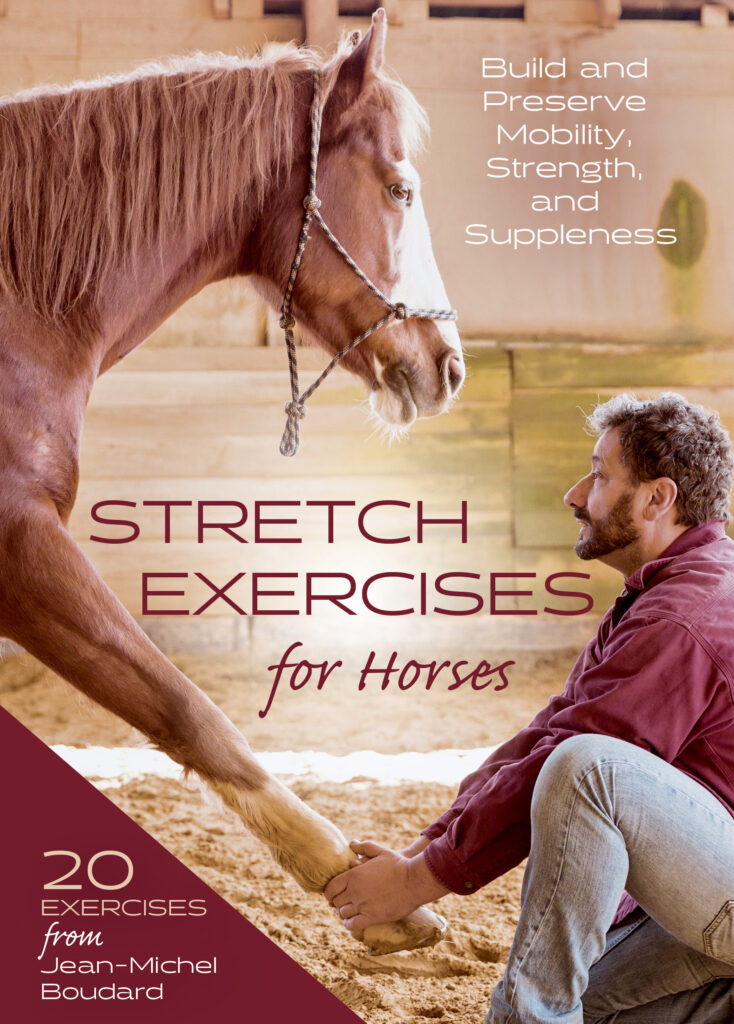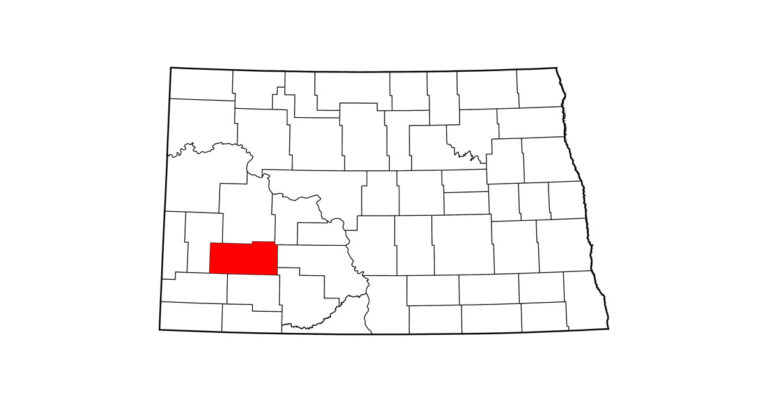So … what is stretching?
Stretching is a form of physical exercise in which a specific muscle or muscle chain is deliberately flexed or extended in order to improve muscular elasticity and tone. Taking into account discoveries in neuromuscular physiology, stretching is a valuable therapeutic technique in its own right, approved in training centers for high-level human athletes. Today, stretching is essential in all types of sports and athletic rehabilitation, allowing athletes to consistently improve their performance. It is a simple and effective technique, when applied in keeping with its fundamental principles.
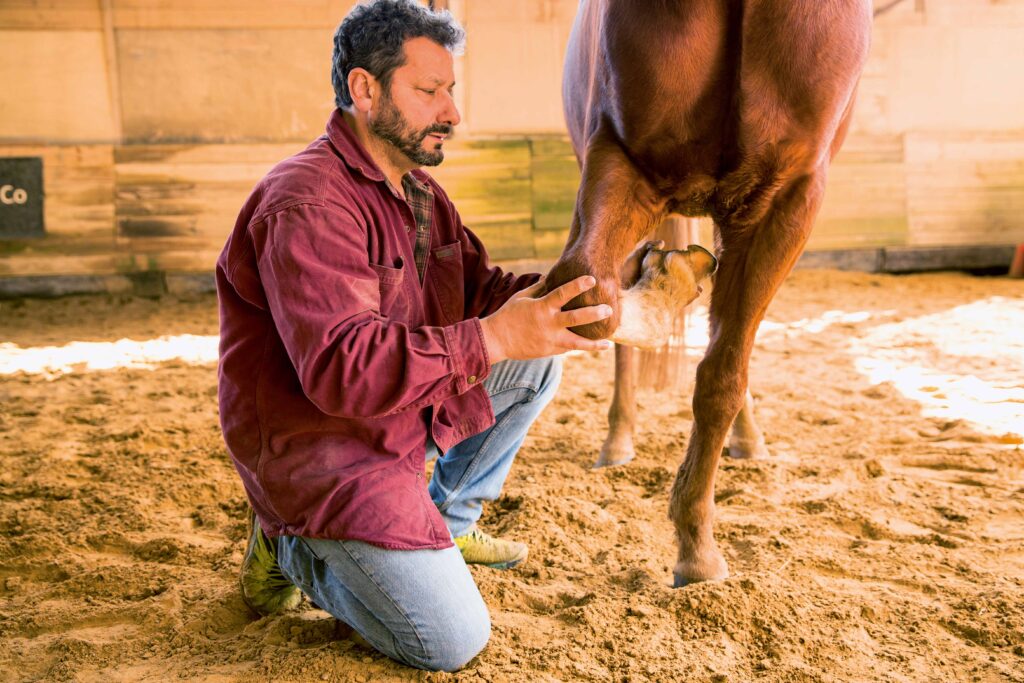
© Jean-Michel Boudard
When in competition, a horse’s training places high demands on his body’s systems (cardiovascular, muscular, articular, and nervous, to name a few) and requires deft technical ability on his part. Consequences: pain, strain, sprains, osteoarthritis, inflammation, and psycho-emotional dysfunctions that can slow down his training program, or even bring it to a halt entirely. As part of the care provided by the team that tends to him (trainer, groom, farrier, veterinarian, osteopath, acupuncturist, massage therapist), stretching can prevent many of these ailments. Daily stretching allows the athlete—including the equine athlete—to undertake a full work schedule while maintaining neuro-musculo-skeletal equilibrium, which is essential to fluidity of movement.
We know that any sports season is dependent on consistent performance: the more continuously an athlete is healthy and performing at their best, the more achievable their competitive objectives will be. This is what makes it essential to preserve the physical parameters of athletic performance, all of them closely linked: strength, flexibility, speed, coordination, and resilience. The practice of stretching makes it possible to maintain all these elements in harmony, in combination with a training program that includes phases of work and phases of rest and integration on physiological, energetic, and psycho-emotional levels.
A good number of horses spend twenty hours a day in their stalls and eat two or three meals. This schedule, imposed on them by humans, does not actually suit their physiology. This is why developing a means to compensate for that kind of inconsistency between physiology and treatment seems to me to be the least we can do for our equine friends. A rider asks his horse, after spending hours in his stall, to be ready to run and jump as soon as the rider arrives, when the rider herself wouldn’t even think of running half a mile, over hurdles, the instant she got out of bed!
The enforced immobility and the tendency to try to roll around in a cramped stall increase the risk of joints stiffening or locking; the horse will naturally attempt to deal with this by stretching on his own as best he can. We can serve him best by providing a stretching program that consciously targets his needs.
When should you stretch your horse? Stretching is useful when warming up prior to a training session, when recovering from exertion, and as part of a flexibility training program.
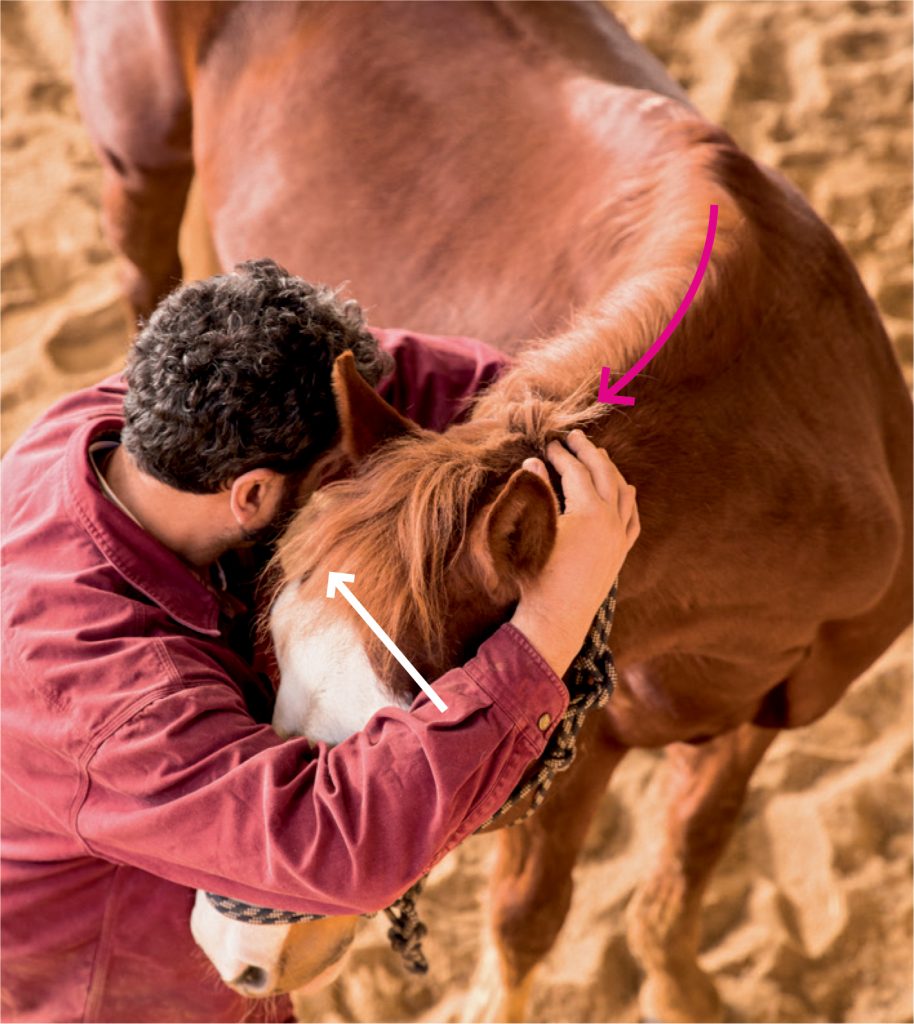
© Jean-Michel Boudard
Warming Up
Warming up increases the heart rate, and helps raise the temperature of the muscle tissue, which promotes the sliding of muscle fibers, ligaments, and fasciae against each other. Warming up also dilates the blood vessels to increase circulation, and therefore deliver more oxygen, to stressed muscle fibers. It accelerates the speed of nerve conduction, puts the horse-and-rider pair in a state of psychological readiness, and promotes sweating (a system of thermal regulation that enables the release of toxins).
Stretching should be included in your warm-up but cannot replace it. A stretching session will strengthen the psychological preparedness of the horse, allow him to release the tensions of stress, and will awaken his body awareness by triggering information from the joint receptors in unusual positions.
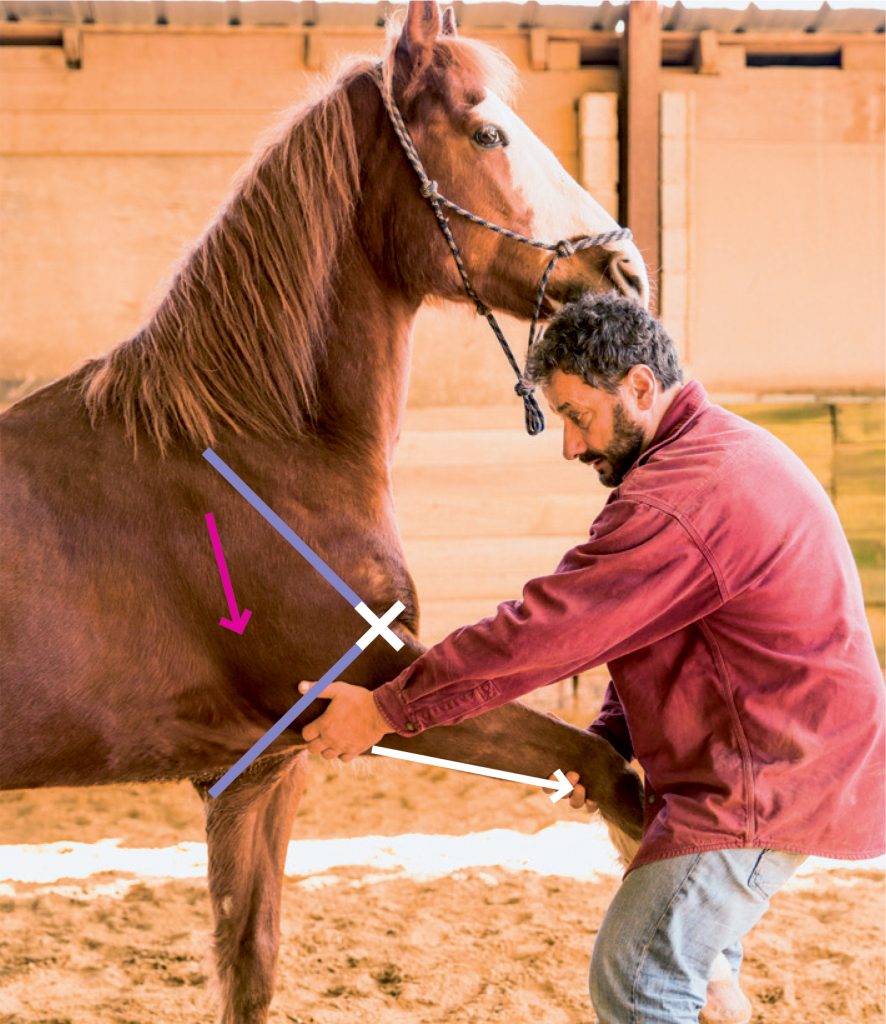
© Jean-Michel Boudard
Recovery from Exertion
Muscle contraction is the result of an electro-biochemical reaction that generates toxins (lactic acids, in particular, during anaerobic work without oxygen), which is to say “wastes” that must be transformed or eliminated by the body. The muscles become tense, range of motion is reduced, and sometimes pain appears, resulting in lameness. In the days that follow, there are aches and contractures with edema in the fetlocks or hocks, due to poor outgoing circulation (the spasmed muscles constrict veins and lymphatic vessels, which pass through fascia, and therefore outgoing drainage of waste from the muscle cells is reduced or impossible).
The best recovery session is an active recovery session. Five to ten minutes after the main work session, stress-free exercise should resume for ten to twenty minutes at an easy pace for the horse—a slow canter or an easy trot—at a level around 60 percent of what was asked of him during the main work session. By reducing the degree of effort required and the amount of stress on the body, it will be possible for the muscles to oxygenate and drain. This kind of aerobic work (work light enough to permit oxygen flow) generates waste products that are immediately drained away by the body and is very useful for recovering from anaerobic work.
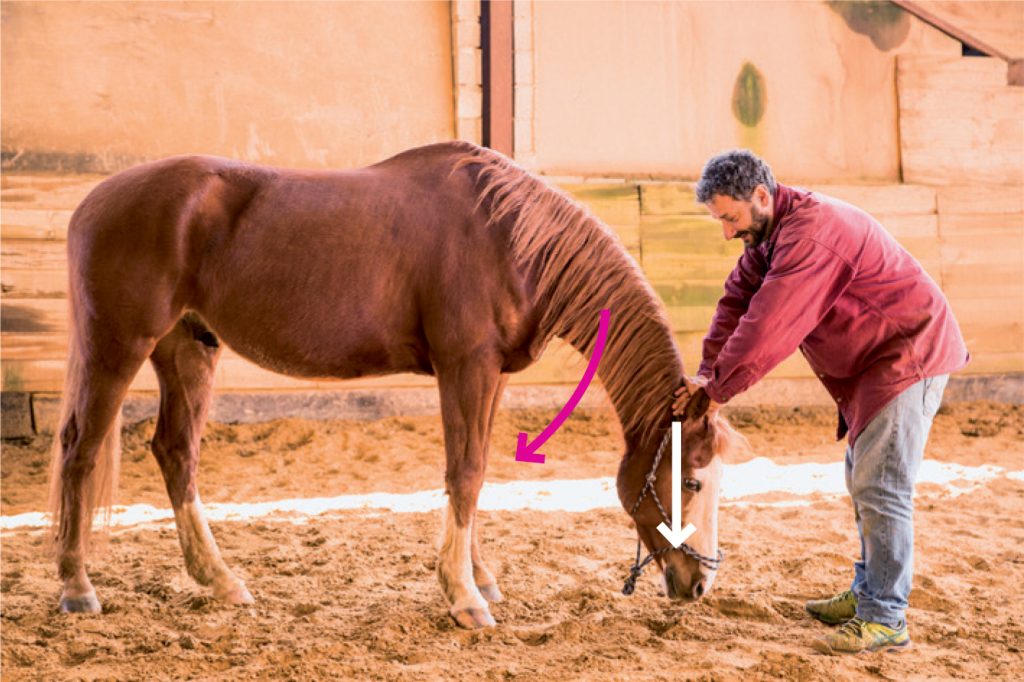
© Jean-Michel Boudard
A good rinse-off should then be followed by a stretching session.
The condition of a horse’s muscles after exertion depends on his level of training and the work that has been asked of him. Overworked muscle tends to shorten and fill up with toxins; the feeling of fatigue weighs on the horse, and certain muscle groups are intermittently painful. This kind of stretching session should be focused around light stretches that do not require any active contraction on the part of the horse. Let us remember that the tensions in the horse after exertion are proportional to the compensatory forces that allowed him to carry out his work. It is often very interesting to compare the horse’s range of motion before and after a work session, and this will let you determine the areas to be monitored, cooled, heated, or massaged.
A Flexibility Training Program
In order to gradually develop the muscular strength of an athlete without placing too much strain on the musculoskeletal system, a stretching program should be planned—one that will guarantee a balanced relationship between strength, flexibility, elasticity, and speed. It’s a worthwhile daily exercise to be put in place, especially with growing horses, in order to lay a good foundation.
This excerpt from Stretch Exercises for Horses by Jean-Michel Boudard is reprinted with permission from Trafalgar Square Books (www.HorseandRiderBooks.com).
Check out the book here.





